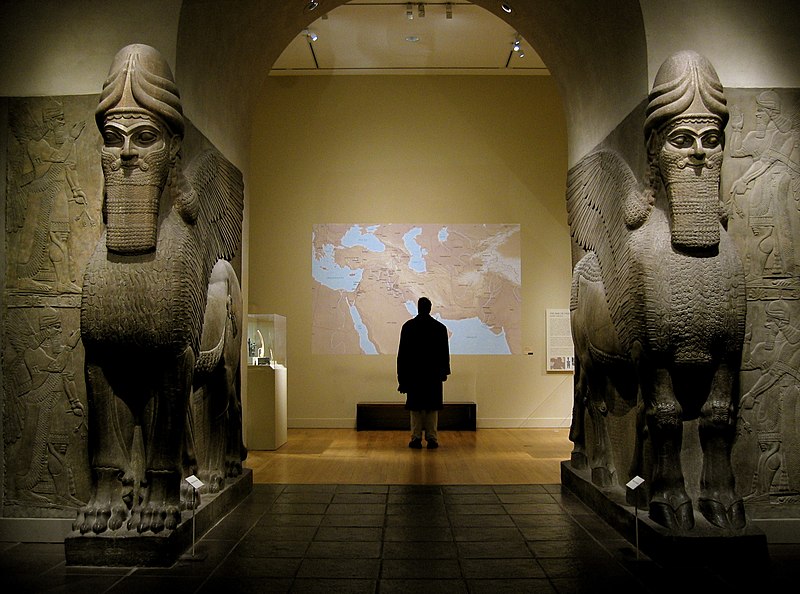Restr:The Gate of Nimrud (Metropolitan Museum).jpg

Ment ar rakweled-mañ : 800 × 594 piksel. pizhderioù all : 320 × 238 piksel | 640 × 475 piksel | 1 024 × 760 piksel | 1 280 × 951 piksel | 2 242 × 1 665 piksel.
Restr orin (2 242 × 1 665 piksel, ment ar restr : 1,22 Mio, seurt MIME : image/jpeg)
Istor ar restr
Klikañ war un deiziad/eur da welet ar restr evel ma oa da neuze.
| Deiziad/Eur | Munud | Mentoù | Implijer | Notenn | |
|---|---|---|---|---|---|
| red | 10 Her 2015 da 03:04 |  | 2 242 × 1 665 (1,22 Mio) | Leoboudv | larger size |
| 17 Kzu 2008 da 02:14 |  | 1 024 × 760 (417 Kio) | Leoboudv | {{Information |Description={{en|1=From the gate of Nimrud. A human-headed winged bull and winged lion (lamassu), Neo-Assyrian from the reign of Ashurnasirpal II; 883–859 B.C. Mesopotamia, Nimrud (ancient Kalhu) Alabaster (gypsum); H. 10 ft. 3 1/2 in. ( |
Implij ar restr
Implijout a ra ar bajenn da heul ar restr-mañ :
Implij hollek ar restr
Ober a ra ar wikioù da-heul gant ar restr-mañ :
- Implij war ar.wikipedia.org
- Implij war azb.wikipedia.org
- Implij war az.wikipedia.org
- Implij war ba.wikipedia.org
- Implij war bg.wikipedia.org
- Implij war ca.wikipedia.org
- Implij war ckb.wikipedia.org
- Implij war cs.wikipedia.org
- Implij war de.wikipedia.org
- Metropolitan Museum of Art
- Liste der Könige von Isin
- Natufien
- Ur-III-Zeit
- Obed-Zeit
- Uruk-Zeit
- Präkeramisches Neolithikum A
- Präkeramisches Neolithikum B
- Samarra-Ware
- Benutzer:Hurin Thalion
- Frühdynastische Zeit (Mesopotamien)
- Neusumerische Zeit
- Hassuna-Kultur
- Wikipedia:WikiProjekt Alter Orient
- Portal:Alter Orient/Babel
- Vorlage:Zeitleiste Alter Orient
- Principal Reception Suite
- Halaf-Kultur
- Wikipedia:Kurier/Ausgabe 5 2010
- Akkadzeit
- Qaraoun-Kultur
- Kebarien
- Nordwest-Palast (Nimrud)
- Isin-Larsa-Zeit
- Altbabylonische Zeit
- Altassyrische Zeit
- Kassitenzeit
- Isin-II-Zeit
- Sultanien
- Dschemdet-Nasr-Zeit
- Benutzer:Illujanka/Baustelle Numero Zwei
- Umm Dabaghiyah-Sotto-Kultur
- Wadi-Rabah-Kultur
- Zarzien
- Benutzer:Illujanka/Feinabstimmung
- Khiamien
- Spätbabylonische Zeit
- Mittelassyrische Zeit
- Implij war en.wikipedia.org
Gwelet muioc'h eus implij hollek ar restr-mañ.
